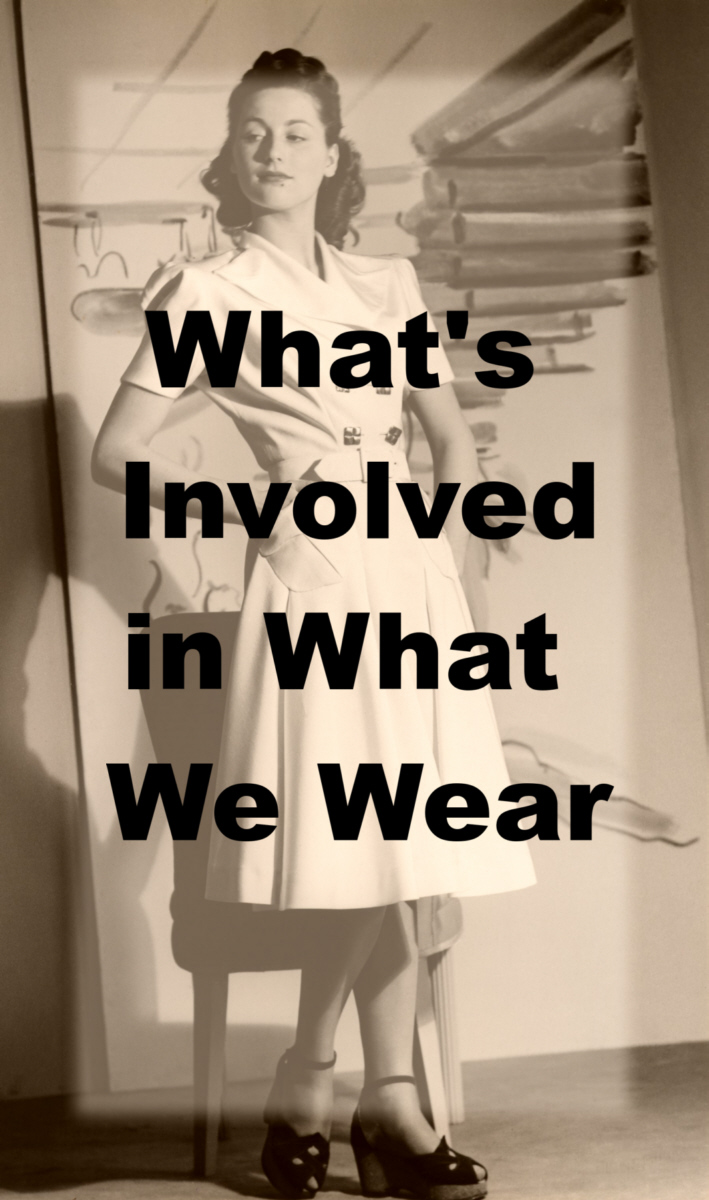
Have you ever looked into your closet and wondered what to wear for some occasion or other? Have you ever agonized over what to wear to your friend’s wedding? To your job interview? Or even just what you’re going to put on when you get up in the morning?
Sometimes the choice is easy—if you have a uniform at work, then you don’t have to worry about what to wear, or if your job has special clothing requirements, your options will be limited and therefore the choice will be easier. If you’re a nurse, you’re going to wear scrubs. Like them or not, they are what you wear to work, and the choice is relatively easy.
But this doesn’t help with the problem of your friend’s wedding, or your day off. So, how to decide what to wear?
Some people are so oppressed by this question that they make uniforms for themselves, so that they never have to decide what to wear. Others constantly buy new clothes so that they can always have something new to wear, or something that will fit each new occasion. Some people hire image consultants to tell them what to wear.
But why are clothes so difficult? On the face of it, it doesn’t seem like it should be so hard… it’s just clothes, right?
Wrong. Clothes are more important that we might think, and serve many purposes, which is why it can be so hard to decide on the right clothes for the occasion.
The right clothes will protect your body, enhance your appearance, and control your own and others’ perceptions about you. Trying to find clothes that look nice would be hard enough, but even that’s not all there is. Even if you look your best wearing a prom dress, that probably won’t be your first choice for a job interview.
In every society clothes have been used to represent status. Whether it is the Native American chief who wears eagle feathers to distinguish himself from the more lowly warriors, or the nobility in renaissance France or England who were by law the only ones allowed certain types of decorations, clothing has always represented social class.
Clothes control others’ perceptions
Some clothes communicate very clear messages. Militaries, sports teams, and other organizations use special uniforms to indicate both to their own members and to others that they are part of a team. Other clothes, like lab coats, are used to indicate that their wearers are members of a particular profession.
We also see certain types of clothes as being more professional than others. The straighter, solid color skirt is more professional than a pair of jeans or frilly patterned skirt, and a buttoned shirt and blazer combination is certainly more professional than a T-shirt.
The business suit is almost a class indicator. People who wear well-fitting business suits tend to look successful and competent to others. Many studies have shown that people make decisions about people based on what they wear. Even small details can make a difference. One study, described in Psychology Today, asked participants to rate a woman who they were told was a “senior manager” on “intelligence, confidence, trustworthiness, responsibility, authority, and organisation.” All they had to go on was her clothes, seen for five seconds or less. “People rated the senior manager less favourably when her dress style was more ‘provocative’, and more favourably when dressed more conservatively (longer skirt, buttoned up blouse).… The clothing in the ‘provocative’ condition was still very conservative in style and look – it was not a short skirt and a revealing blouse, but a skirt slightly above the knee and one button on the blouse undone.”
But shouldn’t people be able to see beyond our clothes? It seems like the answer should be yes, but a considerable body of evidence proves that we often can’t even see beyond our own clothes.
Control our own perceptions of self
Every girl, I think, has experienced the feeling of confidence that comes from wearing an outfit that is “just right.” You feel great all day, and you’re confident and able to go meet new people. You feel like you are projecting the image you want to project.
But what is involved in that “just right” outfit? Well, as it turns out, a lot.
First of all, it needs to fit, and to be of a style that you perceive as looking good on you.
Second, it has to fit the social occasion. That yellow dress might fit you well and look fantastic on you at a wedding, but you’ll probably feel awkward if you go to a funeral in it. You’ll probably prefer something else for just about any job interview as well.
Third, and perhaps most importantly, does the woman you want to be wear those clothes?
You’ve maybe heard the saying, “dress for the job you want, not the job you have.” This is more like, “dress like the person you want to be.”
The New York Times published an article about a study in which people were given an attention-demanding task.One group was handed white coats which they were told were doctor’s lab coats, and another group was given identical white coats which were identified as “painter’s coats.” The result was that “If you wear a white coat that you believe belongs to a doctor, your ability to pay attention increases sharply. But if you wear the same white coat believing it belongs to a painter, you will show no such improvement.”
“It has long been known that ‘clothing affects how other people perceive us as well as how we think about ourselves,’ Dr. Galinsky said.”
So, before you buy that outfit, you might want to ask yourself, Will this outfit make me feel like the person I want to be? And will others treat me like the person I want to be?